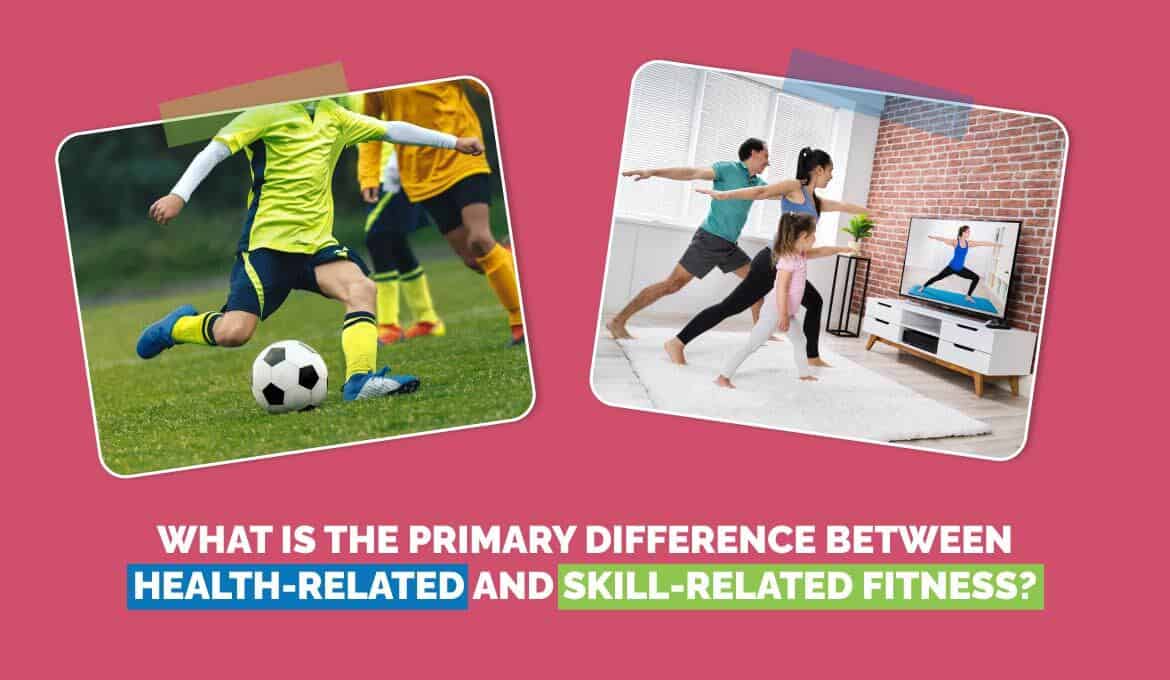
Whether you are looking to start a career in the fitness industry or are planning to go to the gym for the first time, it's crucial that you grasp the difference between health related and skill related fitness.
The two are different in terms of the structured training regimes and consistent efforts required. More importantly, both cater to different sets of individuals. One is more beneficial to the average person, while the latter leans toward athletes.
This article takes a look at the core aspects of each and also touches on their suitability in an individual context.
The One Defining Difference Between Health Related and Skill Related Fitness
When it comes to the core difference between health related and skill related fitness, it essentially boils down to one question: Are you interested in engaging with and performing in a specific sport?
As such, pursuing health-related fitness can benefit everyone, regardless of their backgrounds. Conversely, skill-related fitness applies to those who seek improvement in a particular physical activity.
Consider the example below to understand this better:
Assume you have no previous experience with marathons but planning to participate in one soon. Now, what will your preparation routine look like? The answer is probably: Eat healthier, go for regular jogs, etc. You may even get in some stamina-building exercises between your runs.
Yet, the training regime for someone who has participated in marathons for the last decade will be entirely different. That individual may run with weighted gear to improve their endurance and speed. In addition, they could undergo intense cardio sessions at their local gym.
Essentially, the difference between health-related and skill-related fitness lies in the two terminologies themselves. The former focuses on your overall general health, while the latter is related to enhanced physical performance in any given activity.
What Do Health Related Fitness Components Consist Of?
There are five primary health related fitness components:
- Body composition
- Cardiovascular endurance
- Flexibility
- Muscular endurance
- Muscular strength
Each of the listed factors aids the average person in performing their daily activities adequately. For instance, body composition, which focuses on the ratio of fat mass to fat-free mass, determines an individual's risk of metabolic conditions and overall lifespan.
Concurrently, cardiovascular endurance is measured through the VO2 max system. Alternatively referred to as oxygen uptake, this is the amount of oxygen your body absorbs and then transforms into energy. Even so, high oxygen uptake is vital to maintaining your general fitness.
Flexibility, as the term suggests, is all about having the ability to exercise a range of motions. Interestingly, despite being a critical aspect of musculoskeletal fitness, most training programs prioritize other health-related fitness components over flexibility.
Finally, muscular strength and endurance are interrelated facets that work in tandem. The former is associated with the weight you can lift or move in a given situation. The latter is tied to how long you can do it.
Training in all the mentioned categories can help you achieve a markedly enhanced physique and physical state. More importantly, it will also yield additional benefits.
For instance, improving your cardiovascular endurance will significantly reduce your chances of developing heart disease. On the other hand, engaging in flexibility exercises will ward off the risk of musculoskeletal disorders such as arthritis.
Understanding Skill-Related Fitness Components
Similar to the elements for health-related fitness, skill-related fitness components fall under six designated categories, which include:
- Agility
- Balance
- Coordination
- Speed
- Power
- Reaction time
Now, to improve in each, an individual would require specialized training programs explicitly designed to cater to the specific activity. Here’s an example below to clarify things:
An amateur boxer and a gymnast are training in the same facility. As such, agility-based exercises for the boxer will revolve around feinting moves and footwork. Conversely, the gymnast will work on maintaining momentum or adjusting jump height midway through the flight.
The same applies to all skill-related fitness components.
For instance, training sessions designed to improve reaction times and coordination will center around activities that specifically occur in the given sport or field.
So, a soccer player may have to sprint and dribble a ball simultaneously, while an MMA fighter will focus on dodging a pre-determined set of blows.
Meanwhile, balance training typically involves the trainee attempting to maintain equilibrium on an uneven surface while wearing weights or bearing additional force.
As opposed to this, power and speed training are even more personalized. This is primarily because people have genetic differences that cannot be overcome through any means.
To help mitigate the impact of the same, instructors design each program to cater to an individual while factoring in a person’s contextual strength and movement efficiency.
Health-Related Fitness Vs. Skill-Related Fitness: Which One is More Important?
When debating the importance of health related fitness vs. skill related fitness, you must consider your personal circumstances.
So, say you are in your mid-30s, work in a corporate environment, and rarely get time to play your favorite sport. Ideally, you would be more focused on your health-related fitness. Yet, if you want to work your way from the amateur leagues to the highest level of performance in a specific sport or field, you must give equal attention to both.
So, why does this disparity exist? The answer is simple: Athletes must be exceptionally fit and demonstrate the necessary skills to perform at the highest level.
Nonetheless, these differences do not mean that the average individual cannot opt for both. The degree of training may be relatively relaxed in such cases, enabling them to attain better physical health while improving in their preferred sport.
Smarter Training, Better Results
In several cases, coaches take the difference between health related and skill related fitness to mean that training programs for the same need to be designed separately. While that is true in a few instances, it is not a definitive rule.
For example, a boxer can incorporate a conditioning routine that includes sit-ups and lunges while mixing shadowboxing between each set. This would help improve their cardiovascular endurance while enhancing their agility.
Nonetheless, instructors must focus on designing each program to cater to an individual's current abilities while ensuring incremental increases. Only that will provide a holistic training environment that delivers on all aspects.
Frequently Asked Questions
1. How can you improve your reaction time in sports?
Ans: Depending on what you play, design training sessions that involve commonly occurring events in the designated sport. For instance, if you play hockey, a simple exercise would be to stop as many incoming shots as possible. Some other general activities can include tennis ball drills or signaled sprints.
2. Does the difference between health related and skill related fitness impact program design?
Ans: Most training programs incorporate elements of both due to advancements in the fitness industry and the extensive knowledge that trainers now possess. This is especially beneficial for athletes who want to reach higher performance levels.
3. How soon will you notice results upon engaging in health related or skill-related training programs?
Ans: Every individual develops and improves differently. As such, there is no standard period following which results begin to show. What really matters is the degree of training coupled with session frequency.
Read Also:




